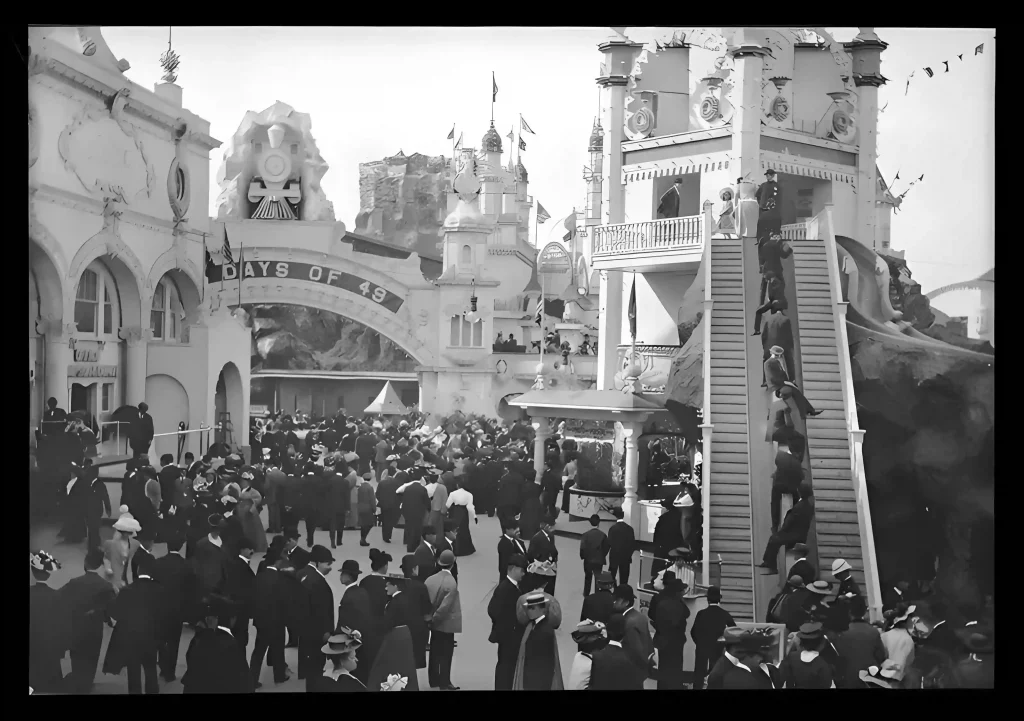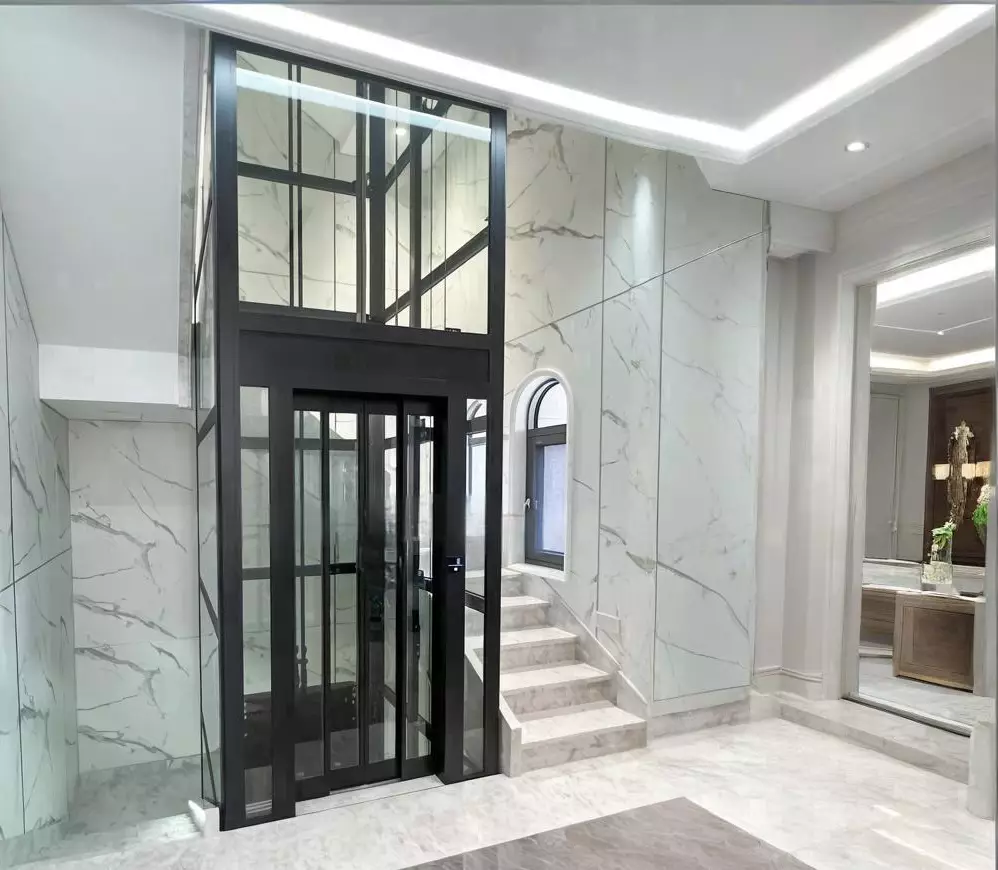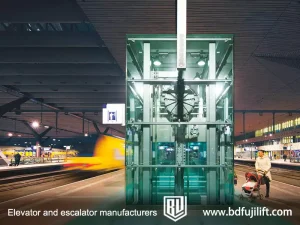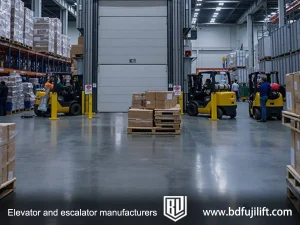The first conceptual expression of an escalator appeared in 1859, when the American Nathan Ames received a patent for what he described as an “improvement in stairways.” Ames was an inventor with several patents to his name, including designs for a railway switch, a printing press, and even combined knife, fork, and spoon cutlery. His escalator patent claimed an endless series of steps revolving around three mechanical wheels, to be powered by hand, weight, or steam. However, this early version never advanced beyond the drawing board and was never built.
As the 20th century approached, cities were growing quickly and new buildings required more efficient ways to move people. In this context, Jesse W. Reno made the key technical breakthrough for moving stairways.
Reno, an engineer involved in plans for the New York City subway system, originally proposed inclined conveyors to transport passengers underground. After his idea was rejected, he focused on perfecting the technology. In 1892, he patented the “inclined elevator,” which he showcased at Coney Island in 1896. Passengers stood leaning forward on a conveyor belt made of parallel cast-iron slats, powered by a hidden motor. In just two weeks, 75,000 people rode the device, lifted seven feet off the ground. Its success was immediate, and the following year another installation appeared at the Brooklyn Bridge.
As often happens when cultural movements and technical innovation converge, another inventor was working in parallel. George Wheeler patented an “elevator” that much more closely resembled the modern escalator, with steps that emerged from the floor and leveled out at the top. In 1899, Charles Seeberger purchased Wheeler’s patent and soon partnered with the Otis Elevator Company to manufacture moving stairways. Seeberger also coined the term escalator—from the French l’escalade, meaning “to climb”—and trademarked ESCALATOR in the United States.
The 1900 Paris Exposition gave the escalator its global debut. Like the Eiffel Tower eleven years earlier, it became one of the exhibition’s icons, winning the Grand Prize and a gold medal for its innovative design. Visitors marveled at this new form of transportation, and soon after, Bloomingdale’s in New York removed its staircases to install Reno’s inclined elevators, while Macy’s followed in 1902. In Paris, Bon Marché introduced Europe’s first Fahrtreppe in 1906.
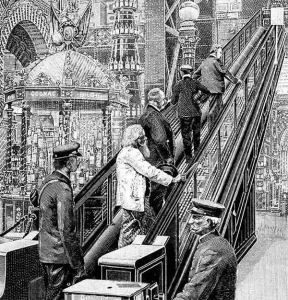
From then on, the escalator revolutionized shopping. Elevators could carry small groups of people, and stairs required effort and time, but moving stairways democratized every level of the department store. Consumers flowed easily from one floor to another, transforming retail space into a seamless vertical marketplace. As the Harvard Design School later observed, “no invention has had a greater impact on shopping.”
By the early 20th century, escalators had moved beyond retail into public transport, first in London and New York’s underground stations. They became symbols of modern life, speeding up factory shifts, guiding masses through train stations, and even appearing as icons of progress in world expositions.
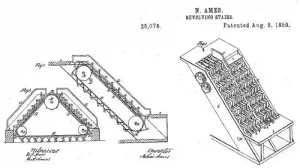
Timeline of Escalator Development
- 1859 – Nathan Ames (USA) patents a “revolving staircase,” one of the earliest ideas for moving stairs.
- 1892 – Jesse Reno (USA) patents an “inclined elevator,” a slanted conveyor belt for passengers.
- 1896 – Coney Island: Reno demonstrates his invention; about 75,000 people ride it in two weeks.
- 1892 – George Wheeler (USA) patents a step-style escalator design, later bought by Charles Seeberger.
- 1899 – Charles Seeberger teams up with Otis and coins the brand name “Escalator.”
- 1900 – Paris Exposition: Escalators are presented to the world and win top awards. A moving walkway is also shown.
- 1900 – Siegel-Cooper store (New York) installs four Reno inclines.
- 1902 – Macy’s (New York) installs modern-style escalators.
- 1906 – Bon Marché (Paris) becomes the first European store with escalators.
- 1911 – London Underground installs its first escalator at Earl’s Court station.
- 1920s – Escalators spread into subways and department stores worldwide.
- 1950 – The word “Escalator” loses its trademark in the U.S. and becomes a common term.
- 1985 – Mitsubishi builds the first working spiral escalator in Japan.
- 1993 – Hong Kong opens the Central–Mid-Levels escalator system, the world’s longest outdoor covered escalator.
- Today – Escalators are everywhere: in malls, airports, train stations, and public spaces across the globe.
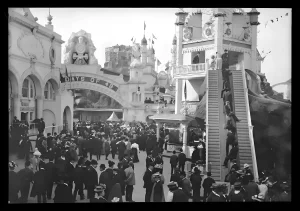
Who Proposed the Concept of the Escalator?
There is a long-running controversy about who truly proposed the first escalator concept. Some credit Nathan Ames, who in 1859 patented his “revolving staircase.” His design showed endless steps powered by hand, weight, or steam. It was never built, but it is often remembered as the earliest formal idea.
Others point to Jesse Reno, who patented his “inclined elevator” in 1892 and gave a public demonstration at Coney Island in 1896. Unlike Ames, Reno’s invention was tested and widely reported, making him the first to show the public a working moving staircase.
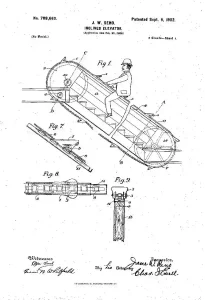
Meanwhile, George Wheeler also patented a step-style escalator in 1892 that more closely resembled modern designs. Although not built at scale, his model became important when Charles Seeberger later bought the rights and advanced it with Otis.
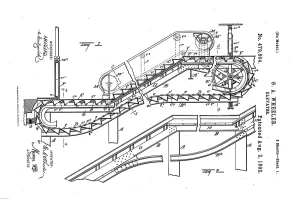
The Origin of “Escalator”
In the United States, as early as 1899, Charles Seeberger registered the word Escalator by blending the French escalade (to climb) with “elevator.” Together with the Otis Elevator Company, he presented the new moving stairs at the 1900 Paris Exposition. The machine impressed visitors, won prizes, and was reported in newspapers across Europe and America.
Yet the story of the name does not end there. In 1950, following a complaint by the Haughton Elevator Company, the U.S. Patent Office officially ruled that “escalator” had become generic. What started as Seeberger’s proud invention name ended as a universal word, By the 1920s and 1930s, architects, engineers, and the general public freely used “escalator” to describe any moving staircase, no matter the maker.
Who Invented the First Working Escalator?
The most common belief to this question is that the credit goes to Jesse Reno. In 1896, he presented his “inclined elevator” at Coney Island, a moving conveyor with metal slats that carried people about 7 feet upward. More than 75,000 passengers tried it in the first two weeks, and newspapers widely reported the event, giving Reno recognition as the first to show a working escalator to the public.
However, some accounts also point to George Wheeler, who patented a step-style design the same year. His machine more closely resembled modern escalators, though it was not displayed in public with the same success. What is true is that Nathan Ames, decades earlier in 1859, had already imagined the idea in his “revolving staircase” patent, even if it remained only on paper.
Who Got the First Escalator Patent?
In the 1890s, the American inventor Jesse W. Reno patented the first moving stairway in 1892, which he called the “inclined elevator.” At the same time, Charles Seeberger developed his own version and patented it in 1899, introducing the word “escalator” for the first time. Neither man worked with the other, so both are recognized as pioneers of this invention.
By the beginning of the 20th century, the Otis Elevator Company had combined Reno’s and Seeberger’s ideas to produce practical escalators for public use.
The first department store to feature this innovation was Harrods in London in 1898, giving shoppers a modern and effortless way to move between floors.
The First Commercial Escalator
During the late 19th century, inventors in the United States experimented with new ways to transport people between floors. In 1892, Jesse W. Reno patented a moving stairway which he called the “inclined elevator,” and in 1896 he installed the first working version at Coney Island, mainly as an amusement ride.
In 1898, Harrods department store in London installed the first commercial escalator for its customers. Although many passengers were initially frightened, it quickly became popular and marked the true beginning of escalators in everyday life.
Since then, escalators have undergone continuous improvements in safety, efficiency, and comfort, ensuring their presence in department stores, subways, and airports worldwide.
The First Spiral Escalator
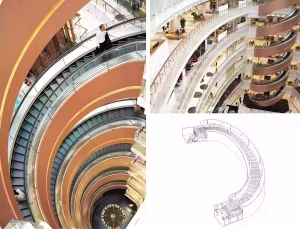
In the mid-20th century, engineers began exploring ways to adapt escalators to fit into tighter spaces and more ambitious architectural designs. The idea of a spiral escalator had been proposed as early as the 1920s, but technical difficulties in guiding the curved tracks delayed its realization.
Already in the 1980s, Mitsubishi Electric in Japan succeeded in building the first working spiral escalator, after developing a unique track system that could bend both vertically and horizontally while keeping steps stable.
In 1985, the first commercial spiral escalators were installed in Osaka, Japan, inside the Hankyu Sanbangai shopping center. They soon attracted worldwide attention for their futuristic design and space-saving advantages.
Today, spiral escalators remain rare and are considered a symbol of both engineering ingenuity and architectural luxury, found in select malls and landmark buildings across Asia, North America, and the Middle East.
Escalators in the 20th Century
During the 20th century, escalators became a standard feature of department stores, railway stations, and airports around the world. To meet different architectural and passenger-flow needs, various installation methods were developed. Parallel escalators allowed smooth movement in one direction and back. Crisscross escalators saved space by placing up and down runs alternately in a zig-zag pattern, common in shopping malls. Spiral and curved escalators offered a striking solution for buildings with limited floor space, while multiple parallel arrangements were used in metro systems to handle large crowds at peak hours.
At the same time, safety features underwent continuous innovation. Early escalators had only simple railings, but by the mid-century, clear yellow step demarcation lines were introduced to guide passengers. Emergency stop buttons became a standard requirement, allowing quick shutdown in case of accidents. Overload protection systems were added to prevent mechanical strain when too many passengers crowded onto the steps. Later, devices to reduce entrapment risks—such as skirt panel brushes and sensors to detect objects near the step edges—were installed, significantly lowering the risk of foot entrapment or clothing being caught.
By the end of the century, escalators had evolved into highly reliable machines. They were no longer just moving stairways, but carefully engineered systems designed to balance efficiency, safety, and the architectural vision of modern public spaces.


